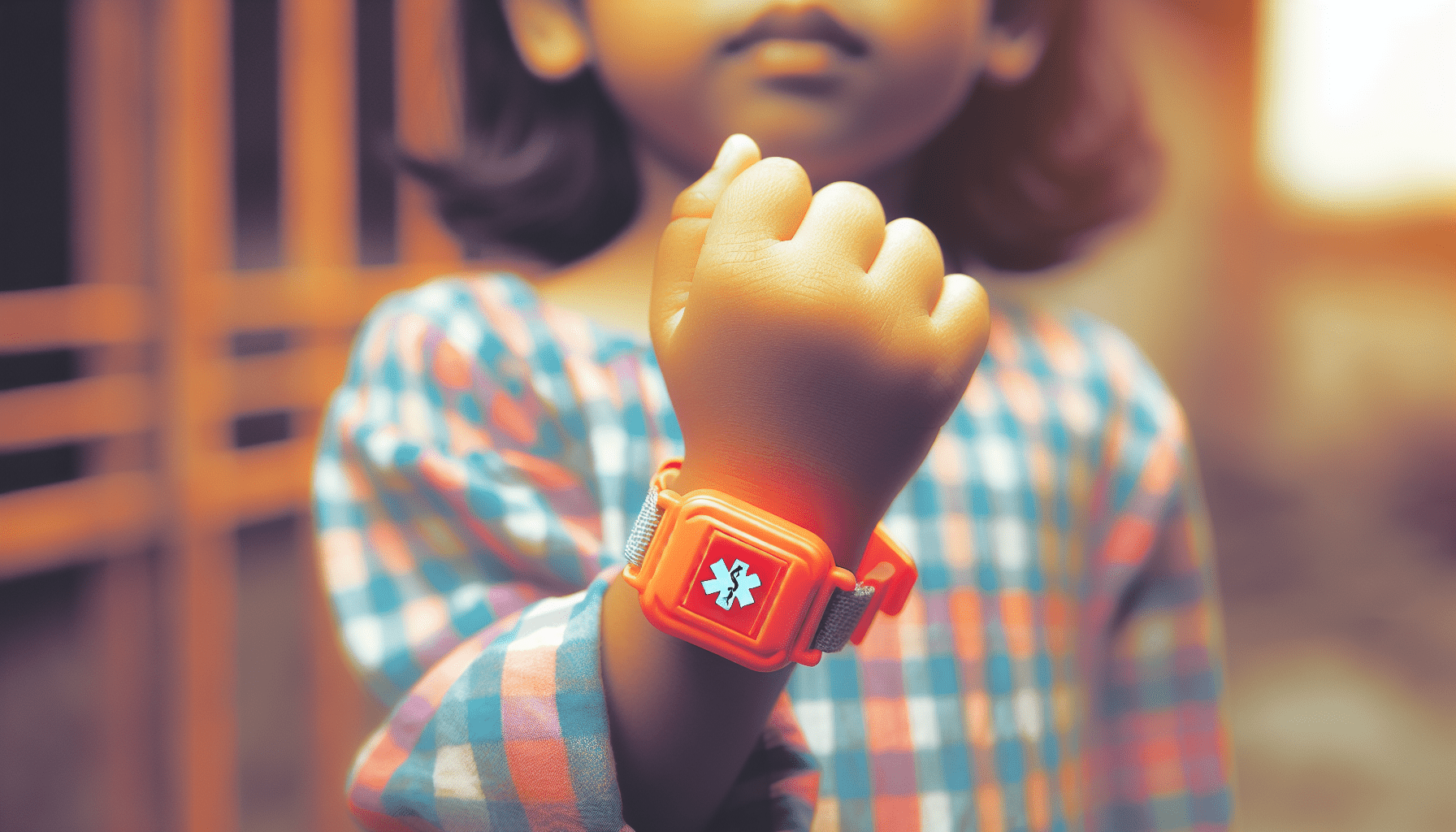Dealing with allergy emergencies can be incredibly stressful, especially when it’s your child experiencing the reaction. In “How to Handle Allergy Emergency Situations with Your Child,” you’ll find practical advice and vital steps to ensure you are prepared for any sudden allergy flare-ups. This guide covers everything from recognizing early signs to administering life-saving treatments, helping you feel more confident and ready to protect your little one in critical moments. Have you ever found yourself in a situation where your child is having an allergic reaction and you’re not sure what to do? If so, you’re not alone. When an allergy emergency hits, it can be extremely frightening and stressful for both you and your child. Knowing how to handle such situations effectively can make a world of difference. Let’s walk through the steps you should take to ensure your child’s safety during an allergy emergency.
Understanding Allergies
Before diving into emergency situations, let’s clarify what allergies are. Allergies occur when the immune system reacts to a foreign substance (allergen) that usually doesn’t cause harm to most people. Common allergens include foods, pollen, animal dander, or insect sting venom.
Common Allergens
Here’s a quick look at some of the most common allergens that might affect your child:
| Allergen Type | Examples |
|---|---|
| Food Allergens | Peanuts, Tree Nuts, Milk, Eggs, Shellfish |
| Environment | Pollen, Dust Mites, Mold |
| Insects | Bee Stings, Wasp Stings |
| Animals | Pet Dander, Feathers |
| Medication | Penicillin, Sulfa Drugs, NSAIDs |
Recognizing Allergy Symptoms
Understanding and recognizing the symptoms of an allergic reaction are crucial first steps. Symptoms can range from mild to severe, and understanding the difference will aid in determining the appropriate course of action.
Mild to Moderate Symptoms
- Sneezing
- Runny or stuffy nose
- Itchy or watery eyes
- Hives or skin rash
- Mild swelling (e.g., lips, eyes)
- Stomach cramps, nausea, or vomiting
Severe Symptoms (Anaphylaxis)
Anaphylaxis is a severe, potentially life-threatening allergic reaction. Symptoms can appear within minutes or even seconds of exposure to an allergen and may involve multiple body systems.
- Difficulty breathing or shortness of breath
- Swelling of the throat and tongue
- Tightness in the chest
- Rapid or weak pulse
- Dizziness or fainting
- Blue skin, lips, or nails due to lack of oxygen

Immediate Actions to Take
Knowing what to do in the critical first moments of an allergy emergency can save your child’s life.
For Mild to Moderate Reactions
- Identify and Remove the Allergen: Quickly identify what has caused the reaction and remove it if possible.
- Administer Antihistamines: Use over-the-counter antihistamines like Benadryl, following the recommended dosage for your child’s age and weight.
- Stay Calm and Monitor: Keep an eye on your child’s symptoms to ensure they don’t worsen. Stay calm to help keep your child calm as well.
For Severe Reactions (Anaphylaxis)
- Administer an Epinephrine Auto-Injector: If your child has been prescribed an EpiPen or similar device, use it immediately.
- Call Emergency Services: Dial 911 or your local emergency number right away.
- Lay Your Child Flat and Elevate Their Legs: This helps improve blood flow to vital organs.
- Administer a Second Dose if Needed: If there’s no improvement within 5-15 minutes, a second dose of epinephrine may be necessary. Always follow your healthcare provider’s instructions.
- Prepare for Transport: Ensure your child is ready for transport when emergency services arrive.
Creating an Allergy Action Plan
An Allergy Action Plan is a straightforward and effective tool to manage your child’s allergies. It outlines the steps to take in both mild and severe allergic reactions and should be readily accessible.
Components of an Allergy Action Plan
- Identification: Your child’s details, including name, age, and a photo.
- Specific Allergens: Clearly list all known allergens.
- Medication: Information on antihistamines, epinephrine auto-injectors, and any other medications your child needs.
- Symptoms Guidance: A breakdown of symptoms and appropriate responses.
- Emergency Contacts: Phone numbers for you, other guardians, and healthcare providers.
- Action Steps: Step-by-step instructions on what to do during an allergic reaction.
Example Allergy Action Plan Template
| Section | Details |
|---|---|
| Child’s Info | Name, Age, Photo, Medical ID Number |
| Known Allergens | Peanuts, Tree Nuts, Shellfish, Bee Stings |
| Medications | EpiPen (location), Antihistamines |
| Symptoms | Mild: Itchy skin, runny nose; Severe: Swelling, difficulty breathing |
| Actions | Administer EpiPen, Call 911, Keep child calm |
| Contacts | Parent 1: 123-456-7890, Parent 2: 098-765-4321, Doctor: 456-789-0123 |

Prevention Strategies
Preventing allergic reactions is always preferable to treating them. Taking proactive steps can significantly reduce the risk.
Educate Your Child
Teaching your child about their allergies can empower them to avoid allergens. Make sure they understand what they are allergic to and the importance of staying away from these substances.
Inform Caregivers and Educators
Ensure that everyone who spends time with your child is informed about their allergies. This includes babysitters, teachers, relatives, and coaches. Share the Allergy Action Plan and make sure they know how to use an epinephrine auto-injector if necessary.
Label Reading
Train yourself and your child to read food labels meticulously. Many packaged foods include allergens, and ingredients can change without notice. Look for statements like “contains peanuts” or “processed in a facility that also processes tree nuts.”
Safe Environment
Creating a safe environment at home and in social settings can prevent many allergic reactions. Consider these actions:
- Keep allergens out of your home.
- Use hypoallergenic bedding.
- Opt for natural or hypoallergenic cleaning products.
- Inform friends and family about your child’s allergies to ensure safe playdates and gatherings.
Travel and Outdoor Safety
Travel and outdoor activities can pose additional challenges when managing your child’s allergies. Planning can make these experiences enjoyable and safe.
Travel Kit
Prepare a travel kit that includes:
- Epinephrine auto-injectors
- Antihistamines
- Allergy Action Plan
- Safe snacks and meals
- Medical ID bracelet for your child
Communicate with Airlines and Hotels
If you’re flying, notify the airline in advance about your child’s allergies. Some airlines offer allergy-friendly flights and can make special accommodations. When booking a hotel, ask about their allergy policies and inquire if they have rooms free of allergens like pet dander or feather bedding.
Outdoor Activities
When planning outdoor activities, be particularly cautious of environmental allergens like bee stings or pollen.
- Check pollen counts and choose low-pollen days for outdoor activities.
- Encourage your child to wear shoes, long sleeves, and pants to minimize exposure to insect stings.
- Carry a well-stocked emergency kit and ensure all supervising adults are aware of your child’s allergies and know how to respond in an emergency.
When to See a Specialist
Managing your child’s allergies might require the expertise of an allergist. These specialists can provide valuable insights and advanced treatments.
Signs You Need a Specialist
- Frequent Reactions: If your child experiences frequent or severe allergic reactions, an allergist can offer more tailored management strategies.
- Complicated Diagnosis: When the allergens are unclear, or your child has multiple allergies, specialist testing can pinpoint specific triggers.
- Ineffective Treatment: If your child’s current allergy management plan isn’t effective, an allergist can recommend alternative treatments or therapies.
What to Expect at an Allergy Clinic
At an allergy clinic, your child will undergo a series of tests to identify specific allergens. The allergist may perform skin prick tests, blood tests, or food challenges to determine the exact triggers. After diagnosis, they will tailor an allergy management plan, which might include medications, lifestyle adjustments, or even immunotherapy.
Emotional Support for Your Child
Living with allergies can be emotionally challenging for your child. Providing emotional support is as crucial as physical care.
Encourage Open Communication
Let your child know that it’s okay to talk about their feelings regarding their allergies. Encourage them to express any fears or concerns openly.
Promote Normalcy
Help your child understand that allergies don’t define them. Encourage participation in activities they love, ensuring safety measures are in place.
Support Groups
Consider joining allergy support groups, either locally or online. These groups can offer valuable resources, foster a sense of community, and provide emotional support for both you and your child.
Handling an allergy emergency with your child requires preparation, knowledge, and quick action. By understanding allergies, recognizing symptoms, creating an Allergy Action Plan, and preparing for various scenarios, you can manage these emergencies with greater confidence and ensure your child’s safety. Remember, the goal is not just to respond to emergencies but to create an environment where allergic reactions are minimized. With the right strategies and mindset, you can navigate the challenges of managing your child’s allergies effectively and compassionately.
